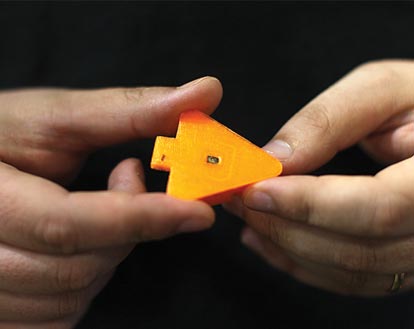Researcher Michael Perrone is currently testing a prototype of one of the world’s most advanced 3D printers, which was built by a startup company known as Voxel8. The 3D printer is not on the market yet, but it can produce small objects out of plastic while simultaneously adding circuitry to them. The printer was produced last month in a lab at Harvard University.
During testing, the prototype wasn’t fully working properly. Researchers reported that, “Just as your inkjet printer sometimes misbehaves, the Voxel8 prototype didn’t want to spit out the conductive silver ‘ink’ that will form an antenna. The problem seemed to be the building’s power and Internet connection getting switched off and then on again, messing with the printer’s electronics.”
Even though 3D printing is still a new technology, many researchers and workers in the industry remain optimistic it will one day be unstoppable.
“The market for 3-D printers will be 10 times bigger in 10 years than it is today,” Ric Fulop, owner of three different brands of 3D printers, said.
Another optimistic individual is Terry Wohlers, president of a consulting firm, Wohlers Associates. Wohlers believes that the sales of 3D printing products and services will double to 7.3 billion dollars in 2016 from the current 4.1 billion dollars it has produced this year.
“Rather than producing flat circuit boards that must be wedged into a finished product, designers in the not too distant future will be able to incorporate circuitry into the product itself. Voxel8’s 3-D printer will allow them to do that. One example: a smartphone in which the antenna is integrated into the outer shell, providing better reception,” Dan Oliver, co-founder of Voxel8, said.
“We think the next big jump is using printers to create finished devices, not just prototypes, with multiple materials in them working together,” Oliver added. The company plans to begin shipping its printers later this year.
